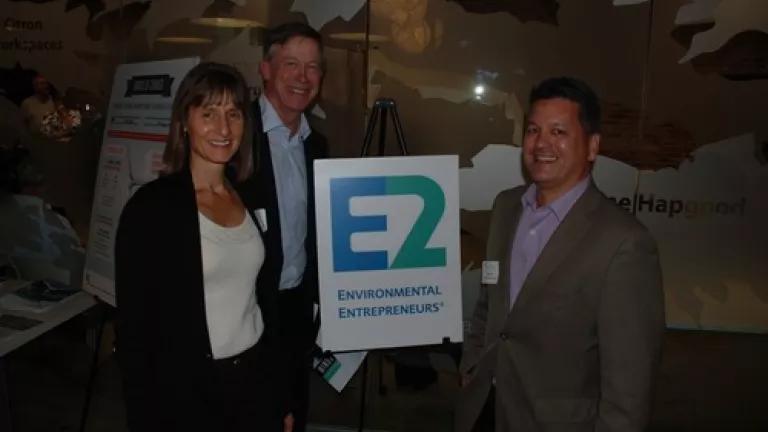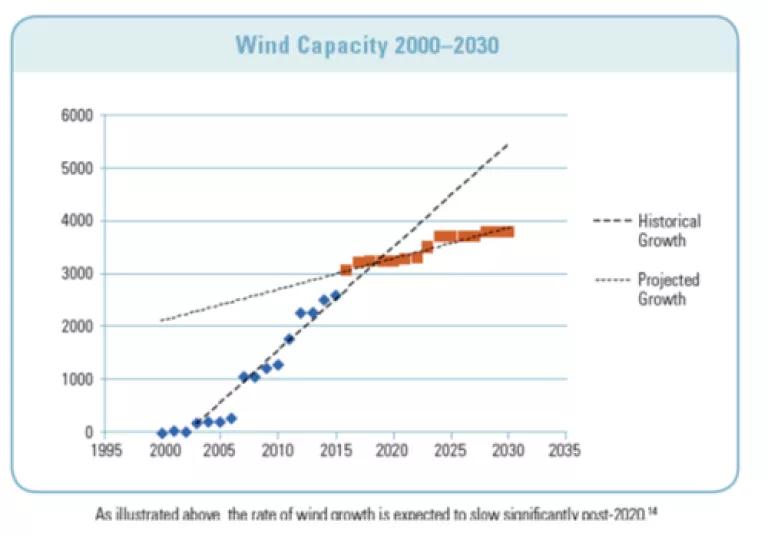
A new report detailing the significant benefits wind energy has brought to Colorado came out today from Environmental Entrepreneurs, E2, NRDC's business affiliate. The report poses a key question: What lies ahead for this booming industry in Colorado, as policies that have been so effective come to an end?
At E2's pre-release event, policy leaders in the state, including Governor Hickenlooper, celebrated the success of wind energy in the state.
Governor Hickenlooper With E2's Colorado Advocate Susan Nedell (left) and E2 Executive Director, Bob Keefe (right)
As the report highlights, Colorado is a national leader in the wind industry, with growing wind installation and a full manufacturing supply chain. Here are some of the numbers:
- Colorado wind as created between 6,000 and 7,000 jobs total as of 2014
- The industry employs nearly 10 percent of the nation's wind workforce
- Colorado has 22 generation related manufacturing plants
- 29 wind farms are producing clean energy in the state
- The wind industry has invested more than $4.8 billion in the state's economy
- Wind farms generate $7.8 million in annual lease payments to ranchers, farmers and other landowners
- Wind power has saved Colorado more than $20 million that would have gone to fossil fuels
Colorado's success is no accident. It is the result of smart policy that builds on Colorado's fantastic natural wind energy potential. Colorado had one of the first renewable energy standards, and its current standard: 30% renewables for investor owned utilities and 20% for rural coops is one of the strongest in the nation. Colorado has also benefited from the federal production tax credit that has helped spur the industry and provided significant savings to Coloradans.

Now, Colorado is at a crossroads: Colorado utilities are on track to meet the renewable standard by 2020 (perhaps even ahead of schedule), and they are already projecting a major slowdown in new renewable energy development. That would be an unfortunate loss of momentum, in a state that still gets most of its energy from dirty fossil fuels, and mostly from coal.
Coloradans rely on and enjoy their natural environment: from snow covered peaks, to irrigation for growing food. Coloradans know the importance of these natural systems, and how devastating it can be when they go wrong, from floods to droughts, which are only expected to be more common with climate change.
Now is no time to slow down the transition to clean energy, especially since clean energy is providing so many economic benefits to Coloradans.
Now that Colorado has seen that it's policies to spur a clean energy economy work, will state policy makers build on that foundation, or will they slow down, just as state achieves significant momentum?
EPA will finalize the Clean Power Plan later this summer. The proposal would cut emissions from the nation's power sector by 30% by 2030. In that proposal, Colorado faces a 35% emissions reduction target. Implementing that plan will provide a potent opportunity for Colorado policy makers to discuss the state's energy future.
Colorado is well positioned to achieve the reductions the clean power plan will require. Those requirements need not be a ceiling on Colorado's clean energy economy. The E2 report brings a spotlight to the need for Colorado to consider how it will continue its leadership- and ensuring the growth of this promising sector.
